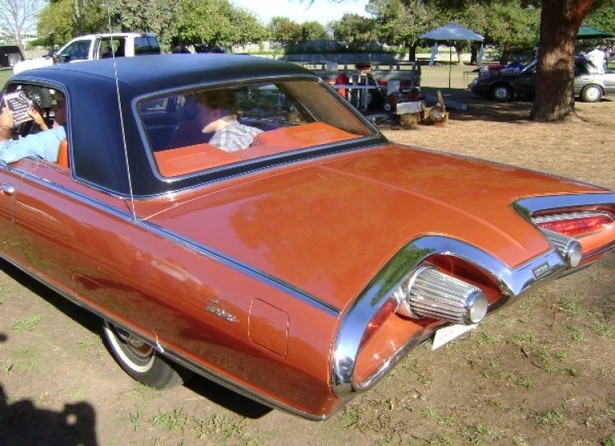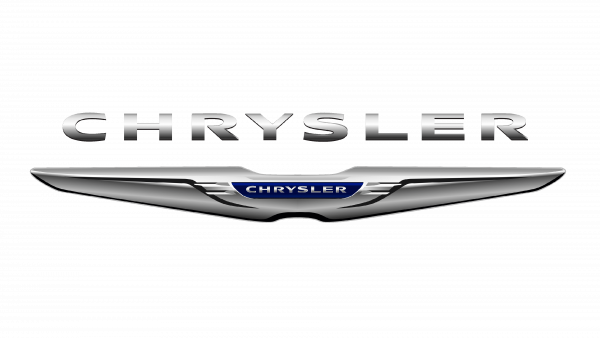1963 Chrysler Turbine Car

The descriptions of the Classic Cars in the Directory were partly generated or supplemented with the help of artificial intelligence (AI). The content may occasionally not always be entirely accurate or factually correct despite careful checking.
The 1963 Chrysler Turbine car was a result of over a decade of research and development, with the goal of creating a vehicle that was powered by an innovative turbine engine. The car was a unique and futuristic-looking vehicle that highlighted the cutting-edge technology used in its design.
The turbine engine in the Chrysler Turbine car had no pistons, cylinders or crankshaft. Instead, it used a series of blades that were spun by hot exhaust gases generated by burning jet fuel. This created a smooth power delivery that was unlike anything else at the time, and the car used a relatively simple transmission that transferred the power to the rear wheels. This engine produced a maximum of 130 horsepower and 425 ft-lbs of torque, which was very impressive for a car of its size and weight.
The exterior of the 1963 Chrysler Turbine car was also designed with aerodynamics in mind. Its low profile, streamlined body helped to decrease drag and improve fuel efficiency. The front end featured a simplistic design, with a large grille and uniquely shaped headlamps. The car also had a distinctive rear end, with a sweeping design that sloped down to the rear bumper. The wheels were also unique, featuring a turbine-like design that was in keeping with the car’s futuristic theme.
Inside, the 1963 Chrysler Turbine car was a comfortable and spacious vehicle. The car was designed to seat four people, with plenty of leg and headroom. The seats were designed with comfort in mind, and the dashboard was simple and uncluttered, with only the essential gauges and controls. The car featured power windows, air conditioning, and a high-end stereo system, which were all impressive features for any car in the 1960s.
One unique feature of the Chrysler Turbine car was its ability to run on a wide variety of fuels. In addition to jet fuel, the car could also run on diesel, kerosene, vegetable oil, and even experimental fuels like unleaded gasoline. This flexibility made the car a potential game-changer, as it would have allowed drivers to use whatever fuel was readily available in their area.
Unfortunately, despite the incredible technology behind it, the 1963 Chrysler Turbine car never made it into mass production. Only 55 vehicles were produced in total, and most were only used for testing and research purposes. However, the car remains a fascinating piece of automotive history and a testament to the incredible engineering that was possible during the 1960s.
Milestones
- 1954: Chrysler executives discuss the possibility of developing a gas turbine engine for use in automobiles - 1956: A team is formed to begin researching and developing the Chrysler Turbine car - 1960: A functional prototype is built and begins undergoing testing - 1962: Chrysler launches a public relations campaign to promote the Turbine car to American consumers, selecting 50 drivers to participate in a "loaner program" where they would test the cars for three months - 1963: The Turbine car is put into limited production, with a total of 55 cars built and distributed to selected individuals and companies for further testing and evaluation - 1966: The Turbine car project is officially ended due to high costs and concerns about the reliability and maintenance of the engines. Most of the produced cars are recalled and destroyed, with a few remaining in private collections and museums.Technical
- The Chrysler Turbine car was powered by a gas turbine engine. - The engine had no valves, pistons, or crankshaft and instead used a rotor with blades. - The car had a top speed of 130 mph and could accelerate from 0 to 60 mph in 12 seconds. - It had a range of approximately 400 miles on a single tank of fuel. - The car was made of lightweight materials such as aluminum and fiberglass, helping to reduce its weight and increase its efficiency. - The transmission was a two-speed automatic system. - The car had four-wheel disc brakes for improved stopping power. - It had power steering and power brakes for added comfort and ease of handling. - The tail fins on the car were purely decorative and served no practical purpose. - Only 55 units were produced between 1963 and 1964 as part of a limited production run.